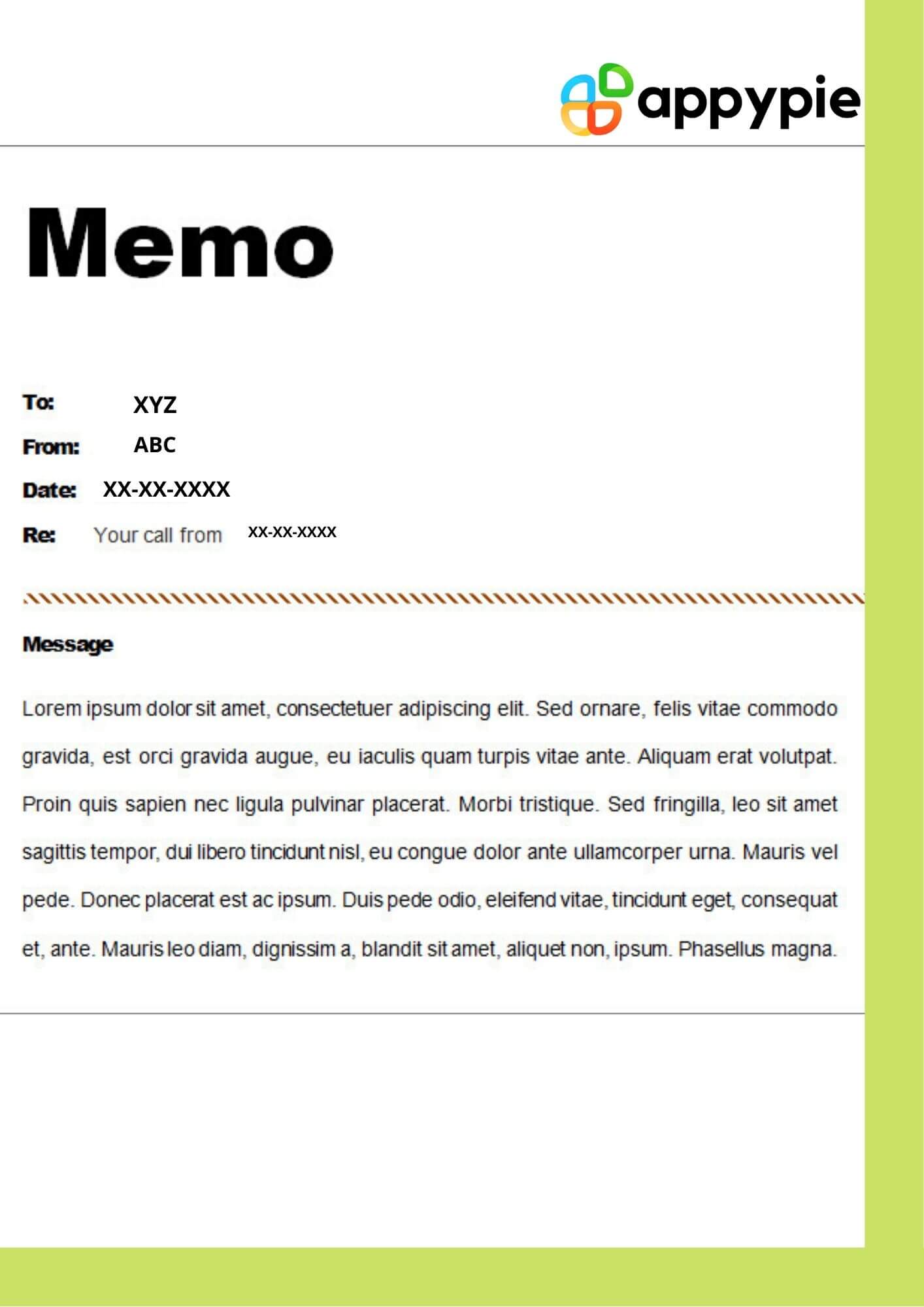

Memo sample full#
A Pew Research Center study showed that as workplaces reopen, 61% of employees chose not to return to the worksite in January 2022, compared to just 36% who felt the same in October 2020, when the pandemic became full blown.ĭavid Ciccarelli, founder and CEO of Voices, a voice over and creative services firm, thinks businesses should have an employment agreement that requires workers to be onsite whenever they ask them to do so. But others will have concerns that businesses should address in their communications, such as: A remote work preferenceĦ1% of employees chose not to return to the worksite in January 2022, compared to just 36% who felt the same in October 2020.Ī chief concern is employees’ growing preference for full-time or hybrid WFH options. Addressing employees’ concernsĮmployees who are ready to return to the office won’t need much coaxing. You may need multiple messages, along with in-person or virtual meetups, for a smoother return. And this could make communicating the come-back to employees challenging, especially for small and medium-sized businesses (SMBs).Ī one-time, blanket announcement may not be enough to get remote workers to want to return to the office. Unlike essential workers, whose have required onsite duties, those who could WFH due to the pandemic are returning to a workplace that’s not the same. One thing is certain: COVID-19 has upturned the way scores of employees perform their jobs. So, how should you communicate your company’s return-to-the office requirement to employees? Very carefully, if you want cooperation from a pandemic-weary labor force that’s preferring the work from home (WFH) arrangement in growing numbers. Even though the pandemic is showing no signs of going away anytime soon, business leaders think it’s time to get the workplace back to normal. Businesses are calling on remote workers to return to the office.


 0 kommentar(er)
0 kommentar(er)
